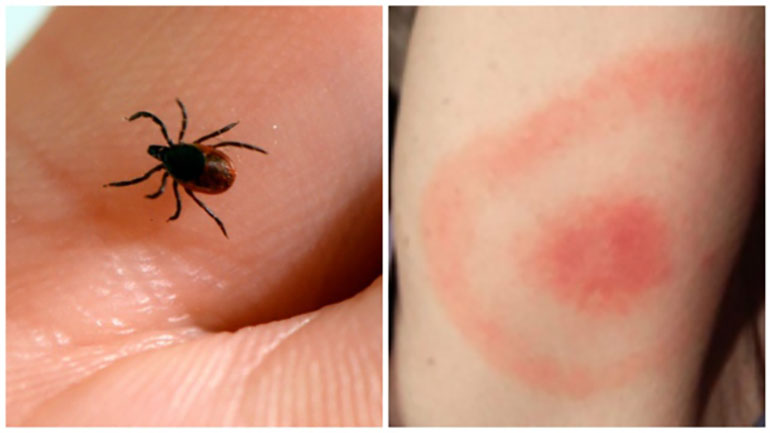
A tick in the left photo and, right, what a tick bite looks like on unprotected skin (Courtesy: CBC News)
Lyme disease is an infectious disease emerging in many parts of Canada, impacting many Canadians and their families.
Federal Health Minister Jane Philpott today announced up to $4 million to establish a Lyme disease research network to improve diagnosis capabilities and treatment.
She said the investment builds on the government’s ongoing support to deal with Lyme disease through surveillance, research, sharing of best practices, laboratory diagnostics and testing, prevention education, and public education and awareness.
Jim Wilson, the founder of Canadian Lyme disease foundation and a survivor, said the disease is expected to be a huge problem this summer because the host ticks were able to survive the warm winter.
“Because of the warm winter, ticks have lived through the winter thus multiplying in number during the summer season raising the risk of the disease to a much higher degree,” he said.
There has been an increase in the number of Lyme disease cases in Canada, rising to 841 in 2016 from 144 in 2009, according to the government of Canada public health services website.
Wilson said pet owners are also at a greater risk this summer because research showed one of every four pet owners as ticks will feed off pet blood.
Ticks are small ectoparasites which can be found particularly on mammals and migrating birds, living off their blood and are too often confused as mites, similar to a flea.
Wilson said nature of Lyme is such that it often goes undiagnosed, often because the symptoms mirror other illness.
“First it is the most undiagnosed disease,” he said. “I had been sick for years with severe headaches, joint problems and heart palpitations until given proper medication through an expert saving my life.
“Since the symptoms are a cluster of expanding complications like fever, fatigue and headaches it makes it much easier to be misdiagnosed,” Wilson said.
A few preventative measures could be taken to prevent the spread of the disease around us, said Peel Region’s health inspector Daniel Jewison.
“It’s better to cover up if visiting parks and try to use insect repellents for your backyard,” he said.
Jewison said if there are antibiotics available to treat those inflicted with Lyme disease.
Wearing white clothes could help spot the insect since they are dark and if bitten it is better to remove the insect with tweezers than fingers because of its infectious nature, he said.
Public Health Ontario, which encourages the use of bug repellent DEET or permethrin on exposed skin and clothes for prolonged protection, recently issued a map highlighting the province’s areas at highest risk of suffering Lyme disease,
http://www.publichealthontario.ca/en/eRepository/Lyme_disease_risk_areas_map.pdf.

